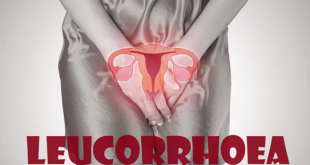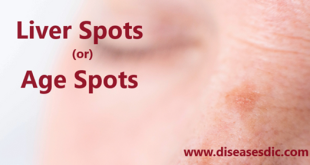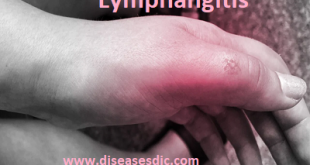What is Lead Poisoning?
Lead poisoning means having lead in the body in an amount that can cause serious health and development problems. It is most often builds up slowly over time, due to repeated contact with small amounts of lead. But swallowing a lead object, such as toy jewelry that contains lead can cause acute lead poisoning, and even death. Lead poisoning is very common. 1 in 40 children ages 1-5 years old have blood lead levels that are considered unsafe (over 5 µg/dL).
Lead is a neurotoxin. It is much more dangerous for children than adults because it affects kids’ developing brains and nervous systems. The younger the child, the more harm lead can cause. Even small amounts of lead exposure add up over time, increasing risk of developmental effects.
Pathophysiology of Lead Poisoning
The major mechanism of lead toxicity is due to increased generation of reactive oxygen species (ROS) and interference with generation of antioxidants. Lead causes the generation of ROS like hydroperoxide, hydrogen peroxide, and singlet oxygen. ROS are stabilized by glutathione in the body. Ninety percent of glutathione in the cell exists in reduced form and 10% in oxidative form, and it typically acts as an antioxidant defense mechanism. Glutathione stabilizes ROS, and after being converted (oxidizing) to glutathione disulfide, it is reduced back to GSH by glutathione reductase. Lead inactivates glutathione by binding to GSH’s sulfhydryl group, which causes GSH replenishment to become inefficient, thereby increasing oxidative stress. Lead also interferes with the activity of other antioxidant enzymes including superoxide dismutase and catalase. The increase in oxidative stress leads to cell membrane damage due to lipid peroxidation. Lead blocks the activity of 5-aminolevulinic acid dehydratase and leads to hemoglobin oxidation, which along with the lipid peroxidation can result in red cell hemolysis.
Lead entering the intravascular space binds quickly to red blood cells. Lead has a half-life of approximately 30 days in the blood, from where it diffuses into the soft tissues, including the kidneys, brain, liver, and bone marrow.
Lead then diffuses into bone and is stored there for a period that corresponds to a half-life of several decades. Increased bone turnover with pregnancy, menopause, lactation, or immobilization can increase blood lead levels. Estimations of blood lead levels are more useful for diagnosing acute lead poisoning, whereas the extent of past lead exposure can be estimated by determining the body burden of lead on the basis of results from the edetate (EDTA) calcium disodium (CaNa2 EDTA) lead mobilization test.
Lead is primarily excreted in urine and bile, but the elimination rate varies, depending on the tissue that absorbed the lead. The kidney excretes lead by means of glomerular filtration and tubular secretion. Lead has bidirectional transport across the tubular epithelium. The clearance of lead ranges from 1 to 3 mL/min and is relatively independent of kidney function.
What causes Lead Poisoning?
Lead poisoning occurs when lead is ingested. Breathing in dust that contains lead can also cause it. You cannot smell or taste lead, and it’s not visible to the naked eye.
In the United States, lead used to be common in house paint and gasoline. These products are not produced with lead any longer. However, lead is still present everywhere. It’s especially found in older houses.
Common sources of lead include:
- House paint made before 1978
- Toys and household items painted before 1976
- Toys made and painted outside the United States
- Bullets, curtain weights, and fishing sinkers made of lead
- Pipes and sink faucets, which can contaminate drinking water
- Soil polluted by car exhaust or chipping house paint
- Paint sets and art supplies
- Jewelry, pottery, and lead figures
- Storage batteries
- Kohl or kajal eyeliners
- Some traditional ethnic medicines
Who is at risk for Lead Poisoning?
These people are most at risk for lead poisoning:
- Children between the ages of 1 and 3
- Children in low-income families
- African Americans
- Mexican Americans
- People living in large metropolitan areas
- People living in older housing
- People living in housing built before 1978
- People working in places that have lead exposure, such as lead smelters, lead refineries and lead mines, battery manufacturers, and rubber-product manufacturers
- People drinking water that comes through lead pipes
- People using plates, cups, pitchers, or plates made with a lead-based glaze
Symptoms
Initially, lead poisoning can be hard to detect – even people who seem healthy can have high blood levels of lead. Signs and symptoms usually don’t appear until dangerous amounts have accumulated.
Lead poisoning symptoms in children
Signs and symptoms of lead poisoning in children include:
- Developmental delay
- Learning difficulties
- Irritability
- Loss of appetite
- Weight loss
- Sluggishness and fatigue
- Abdominal pain
- Vomiting
- Constipation
- Hearing loss
- Seizures
- Eating things, such as paint chips, that aren’t food (pica)
Lead poisoning symptoms in newborns
Babies exposed to lead before birth might:
- Be born prematurely
- Have lower birth weight
- Have slowed growth
Lead poisoning symptoms in adults
Although children are primarily at risk, lead poisoning is also dangerous for adults. Signs and symptoms in adults might include:
- High blood pressure
- Joint and muscle pain
- Difficulties with memory or concentration
- Headache
- Abdominal pain
- Mood disorders
- Reduced sperm count and abnormal sperm
- Miscarriage, stillbirth or premature birth in pregnant women
Effects of lead in the body
Lead poisoning can affect just about every system in the body yet often produces no definitive symptoms. The following are some of the most common symptoms of lead poisoning:
- Damage to the brain and nervous system
- Behavior and learning problems, or slowed growth
- Hearing problems
- Headaches
- Anemia
Lead is also harmful to adults, and may cause:
- Problems during pregnancy
- Reproductive problems in both men and women
- Anemia
- Kidney damage
- High blood pressure
- Digestive problems
- Nerve disorders
- Memory and concentration problems
- Muscle and joint pain
High levels of lead may also cause seizures, coma, and death. The symptoms of lead poisoning may look like other conditions or medical problems. Always talk with your child’s healthcare provider for a diagnosis.
How Lead Poisoning is diagnosed?
Many doctors will routinely recommend screening kids for lead poisoning as early as 6 months, depending on how much lead the child is likely exposed to at home or in a childcare setting.
For older children and adults, testing is typically only done if there’s a reason to believe they’ve been exposed to high doses of lead. In these cases, your doctor will likely start with a series of questions about your environment, do a physical exam, and run a blood test to check for high lead levels in the body.
Self-Checks/At-Home Testing
Lead toxicity is primarily diagnosed using a formal lab test in a clinical setting, but there are a number of things you can do at home to check if you or a family member is at risk. In addition to removing or avoiding sources of lead in the home or at work, it’s important to watch for signs of lead poisoning and alert your doctor right away if you see them – especially behavioral changes like irritability, hyperactivity, or lack of focus, as well as developmental delays in small children.
Screening
No lead levels have been found to be safe in kids, and even small amounts have been linked to behavioral issues and drops in IQ. Because of this, most pediatricians will routinely screen young children and infants for possible exposure to lead as part of their general checkups. In many cases, this includes a questionnaire asking about various risk factors, such as how old the child’s home or daycare facility is, whether they eat non-food things like dirt or paint chips, or if a parent or close contact is exposed to lead frequently because of their job or hobbies. If the answer is yes or you aren’t sure to any of the questions, your doctor will likely want to do more testing to check for elevated blood levels.
Physical Exam
If there is any reason to suspect lead poisoning, your doctor will likely want to conduct a physical exam in addition to a blood test in order to look for signs and symptoms of toxicity. This is important because as lead builds up in the body, it gets stored in the bones. It’s only in the blood for a little while after exposure, meaning someone in contact with lead over a long period of time could have a high level of lead in their body even if a blood test comes back normal. A physical exam could catch signs a lab test couldn’t.
Labs
The most common type of testing for lead poisoning is a blood test, known as the BLL (blood lead level) test. There are two kinds of blood tests that can indicate whether a person has an elevated blood lead level: a finger prick test and a blood draw.
Capillary Blood Sample
This method of testing uses only a finger prick to take a small sample of blood, making it a relatively simple and easy way to test for high lead levels. The downside, however, is that these samples can get contaminated with lead from the environment and skew test results to make it look like lead levels are higher than they really are.
Venous Blood Lead Level Testing
A blood draw from a vein is a much more useful screening and diagnostic test for high lead levels, but requires a trained phlebotomist to take and process the sample to avoid contamination with lead from the environment. This method is often the preferred test to check for high lead levels because it tends to be more reliable than the finger prick test.
X-Ray
In cases where children have symptoms of lead toxicity, elevated blood lead levels, and/or a history of pica – that is, eating non-food things like dirt or paint chips – it’s recommended that an X-ray be taken of the abdomen to check for foreign objects.5 If solid flecks appear on the X-ray signaling the child has ingested materials containing lead, doctors will often use a decontamination procedure to irrigate, or “flush out,” the intestines, removing the potential sources of lead to prevent or stop them from being absorbed by the body.
Treatment for Lead Poisoning
As with most types of poisoning, the first step is to identify and remove the source of the poison.
If the problem is old paint, it may be best to seal in the paint rather than to chip it, sand it or burn it off, which could increase the quantities of lead in the air.
If removing the source does not reduce blood levels, the following may be necessary:
Chelation therapy: This involves medication that binds with the lead and allows it to be passed in the urine or feces.
Additionally, if there are concerns that someone has eaten a life-threatening amount of lead in one dose, the following procedures might be needed:
EDTA chelation therapy: Doctors treat adults with lead levels greater than 45 mcg/dL of blood and children who can’t tolerate the drug used in conventional chelation therapy most commonly with a chemical called calcium disodium ethylenediaminetetraacetic acid (EDTA). EDTA is given by injection.
Bowel irrigation: Flushing out the entire gastrointestinal tract with large volumes of polyethylene glycol solution
Gastric lavage: Also called gastric suction or stomach pumping, this involves washing out the stomach via a tube and saline irrigation inserted into the throat.
Intravenous fluid administration may be necessary.
How can we protect our family?
To help protect your kids from lead poisoning by:
- Keep your home lead-free. Ask your local health department about having your home checked for lead sources.
- Ask your doctor about having your kids tested for lead exposure. If a child has lead poisoning, all siblings should be tested.
- Be wary of old plumbing that might be lined with lead. If you have an old plumbing system (in homes built before 1970), which used copper pipes and lead solder, you may want to get your water tested. Call your local health department or water department to find a laboratory that will test your water for lead content.
- If the water from the cold faucet has not been run for several hours, let cold water run for 30 seconds before drinking it. And because hot water absorbs more lead than cold water, don’t use hot tap water for meals.
- Wash your kids’ hands and toys often, and keep dusty surfaces clean with a wet cloth.
- Make sure that iron and calcium are in your diets. If kids are exposed to lead, good nutrition can reduce the amount absorbed by their bodies. Eating regular meals is helpful because lead is absorbed more during periods of fasting.
- Know where your kids play. Keep them away from busy roads and the underside of bridges.
 Diseases Treatments Dictionary This is complete solution to read all diseases treatments Which covers Prevention, Causes, Symptoms, Medical Terms, Drugs, Prescription, Natural Remedies with cures and Treatments. Most of the common diseases were listed in names, split with categories.
Diseases Treatments Dictionary This is complete solution to read all diseases treatments Which covers Prevention, Causes, Symptoms, Medical Terms, Drugs, Prescription, Natural Remedies with cures and Treatments. Most of the common diseases were listed in names, split with categories.







